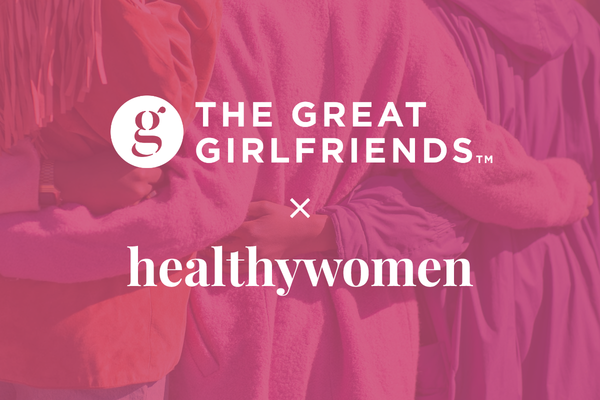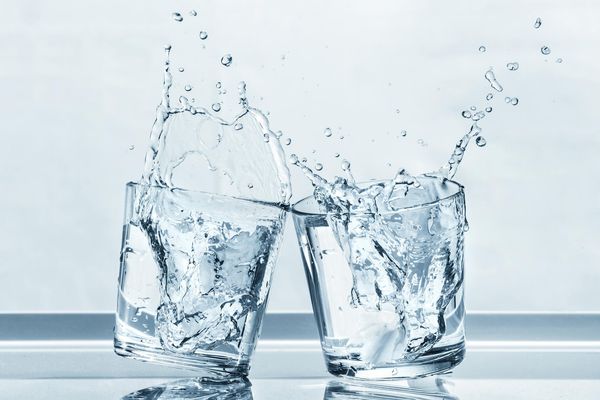Ever since my 28-year-old son ran his first marathon earlier this month, he's more concerned than ever about optimizing his health. (For all you mothers out there who try to instill good habits in your children and think they're not listening, there's hope that when they get older your messages will have resonated.)
Last night after enjoying our weekly Sunday dinner, we sat down to chat about this. Although he thought he was doing a lot of things right, he was surprised to learn that there were some things he was doing wrong. He's hardly to blame: so many of us are confused by all the health misconceptions and mixed messages out there. Along with that, false (or should I say, inflated) promises and advertising extolling the latest health trends can lull or mislead us into a follow-the-crowd mentality for lack of full disclosure.
READ: 5 Easy and Healthy Dining Out Tips
1. Fats Are Bad for You
American's obsession with weight loss turned millions of people onto the low-fat obsession. But along with that, it turned them to things like trans fats, which increase the risk of obesity, diabetes and heart disease. And if you think low or reduced-fat products will save you calories, think again: many of these products are high in sugar to make up for the lost flavor. For instance, two low-fat Snackwell's Creme Sandwich cookies have the same number of calories as two regular Oreos.
What's Important to Know:
Your body needs fat to function properly. During exercise, it uses calories from the carbohydrates you've eaten—but after 20 minutes, it burns fat to keep you going. Fat also keeps skin and hair healthy and helps you absorb vitamins A, D, E and K. In addition, it fills your fat cells and insulates your body to help keep you warm.
But all fats are not created equal. Try to stick to primarily healthy fats like monounsaturated and polyunsaturated fats, which include the omega-3s, with their many touted health benefits. Omega-3s are found in fish and other seafood, as well as in nuts and seeds. Other good sources of unsaturated fats include avocados, olives and most vegetable oils (except for palm and coconut oils). Unsaturated fats can improve blood cholesterol levels, thus decreasing risk of heart disease and may also help avoid or control diabetes.
Limit your intake of saturated fats, which are found primarily in meats and whole-fat dairy products and can increase LDL, or bad, cholesterol, increasing risk of cardiovascular disease.
Lean, grass-fed meats, skinless poultry and reduced-fat dairy can be part of a healthy diet. The American Heart Association (AHA) recommends eating no more than six ounces of lean meat, poultry, fish or seafood a day and opting for low-fat, 1 percent or fat-free dairy whenever possible.
The AHA recommends avoiding trans fatty acids, also known as trans fats, as much as possible. Trans fats are manufactured through a process called hydrogenation, which aims to stabilize polyunsaturated oils so they remain solid at room temperature and won't become rancid. Like saturated fats, they can raise LDL, increasing risk for heart disease and may increase risk for certain cancers. Hydrogenated fats may be used in commercial baked goods (cookies, crackers, doughnuts), stick margarine and other processed and fried foods.
One important caveat: Just because some fats are "healthy," that doesn't mean they don't contain calories! Fat, whether from plant or animal sources, contains more than twice the number of calories of an equal quantity of carbohydrate or protein. For instance, one tablespoon of olive oil contains 119 calories.
READ: Easy Ways to Eat Smart and Healthy
2. Multigrain and Seven-Grain Are Healthy
Many people wrongly believe that if a product like bread or pasta consists of lots of grains, it's healthy—and maybe even healthier than a product with just one grain.
What's Important to Know:
The grain has to be a whole grain. That means that all parts of the grain kernel are used. The kernel is where most of the fiber, nutrients and other healthy plant compounds live. The germ is rich in essential fatty acids and B vitamins, the endosperm is mostly starch, and the bran is high in fiber.
Just because a product is multigrain does not mean the grains used to make it are whole grains. Look for products whose first ingredient is listed as "whole wheat," "whole oats" or another whole grain; otherwise you're getting refined grains, where most of the germ and bran have been removed. All you're left with is the starchy endosperm—the least nutritious part of the valuable grain.
3. Eggs Are Bad for Your Cholesterol
No longer deserving of their bad reputation because of their cholesterol content, recent studies have not confirmed the correlation between consuming eggs and an increased risk for heart disease. For most people the cholesterol in food is only a minor factor in contributing to high blood cholesterol.
What's Important to Know:
Eggs are relatively low in saturated fat, which turns out to be the major determinant of LDL cholesterol. Walter Willett, a professor of epidemiology and nutrition at Harvard's School of Public Health tells livescience.com that the amount one egg raises the blood's cholesterol is "extremely small," and that these small elevations in LDL (bad) cholesterol "could easily be countered by other health aspects of eggs," like protein, vitamin D, choline, lutein and zeaxanthin.
The AHA recommends you limit your cholesterol intake to 300 milligrams daily if you have normal LDL levels. That number goes down to 200 if you have heart disease or an LDL count greater than 100. One egg contains 186 milligrams of cholesterol; 184 of those are in the yolk.







